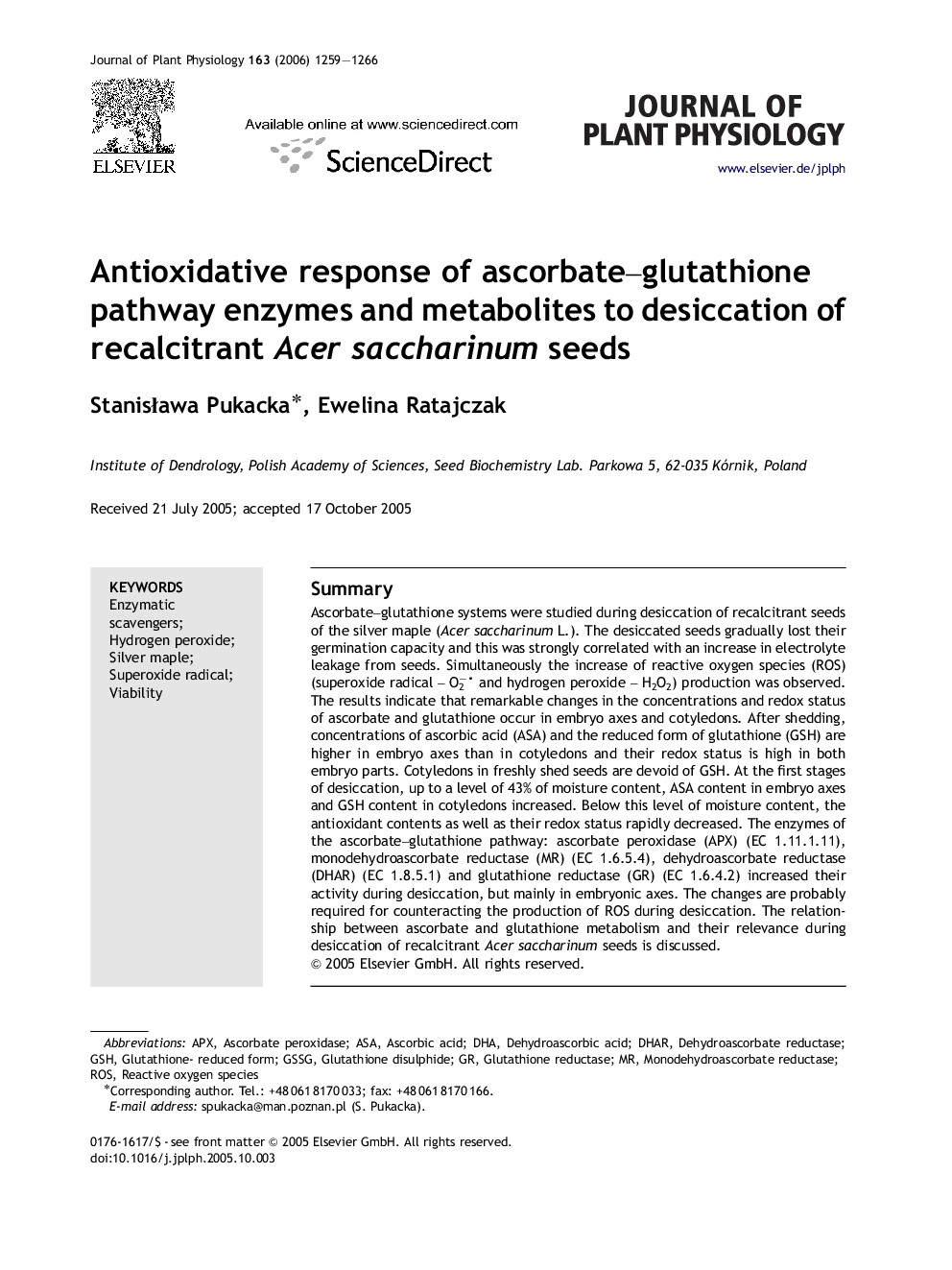| Article ID | Journal | Published Year | Pages | File Type |
|---|---|---|---|---|
| 2057363 | Journal of Plant Physiology | 2006 | 8 Pages |
SummaryAscorbate–glutathione systems were studied during desiccation of recalcitrant seeds of the silver maple (Acer saccharinum L.). The desiccated seeds gradually lost their germination capacity and this was strongly correlated with an increase in electrolyte leakage from seeds. Simultaneously the increase of reactive oxygen species (ROS) (superoxide radical – O2− and hydrogen peroxide – H2O2) production was observed. The results indicate that remarkable changes in the concentrations and redox status of ascorbate and glutathione occur in embryo axes and cotyledons. After shedding, concentrations of ascorbic acid (ASA) and the reduced form of glutathione (GSH) are higher in embryo axes than in cotyledons and their redox status is high in both embryo parts. Cotyledons in freshly shed seeds are devoid of GSH. At the first stages of desiccation, up to a level of 43% of moisture content, ASA content in embryo axes and GSH content in cotyledons increased. Below this level of moisture content, the antioxidant contents as well as their redox status rapidly decreased. The enzymes of the ascorbate–glutathione pathway: ascorbate peroxidase (APX) (EC 1.11.1.11), monodehydroascorbate reductase (MR) (EC 1.6.5.4), dehydroascorbate reductase (DHAR) (EC 1.8.5.1) and glutathione reductase (GR) (EC 1.6.4.2) increased their activity during desiccation, but mainly in embryonic axes. The changes are probably required for counteracting the production of ROS during desiccation. The relationship between ascorbate and glutathione metabolism and their relevance during desiccation of recalcitrant Acer saccharinum seeds is discussed.
